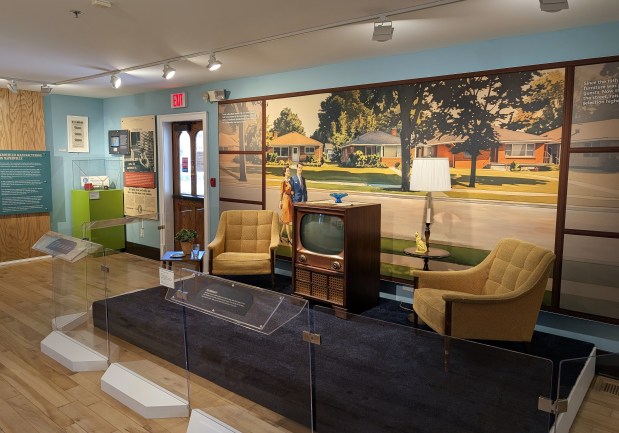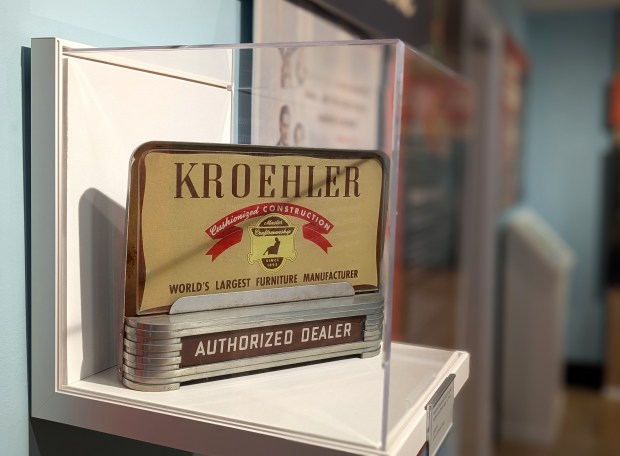Kroehler Manufacturing Co. was once a household name. Naper Settlement’s newest exhibit explores just how the Naperville business marketed itself to eventually become at one time the world’s largest furniture producer.
“Selling Kroehler” details the advertising strategies the company employed amid a changing consumer culture during the 20th century.
The origins of Kroehler Manufacturing Co. date back more than 130 years ago, growing out of an entity called the Naperville Lounge Factory that was founded in 1893. The company name was later updated to reflect the ownership of longtime President Peter Kroehler, who was instrumental in building it into a nationally known business.
At its peak, Kroehler had about 8,000 employees. Between the 1940s and 1960s, annual sales climbed from $20 million to more than $100 million before its demise in 1981.
Because of the company’s local roots, Naper Settlement has collected a large assortment of Kroehler materials, according to Jeanne Schultz Angel, the history museum’s associate vice president of humanities. A couple of years ago it was decided they would use them to curate an exhibit and they began thinking about what kind of story they wanted to tell, Schultz Angel said.
As chief curator Christine McNulty and curator of history Andrea Field looked at materials on hand, there “was a story that was sort of bubbling up wanting to be told and that was the story of marketing,” Schultz Angel said. “Of how innovative Peter Kroehler and the company were in marketing their furniture.”
From there, the story evolved into how Kroehler’s strategies related to broader American history and consumer habits at the time, she said.
In the decades following the Civil War, the United States emerged as an industrial giant, according to an overview of the rise of industrial America from the Library of Congress. Following World War II, a post-war economic boom brought about higher wages that in turn fueled a new consumer culture, per a 2022 article from the National World War II Museum.
“That’s what we found really, really interesting. … In the midst of all of this, we have our example of Kroehler Manufacturing,” Schultz Angel said.
The exhibit, stretching across three rooms in the Pre-Emption House buiding, is a compilation of advertising materials, descriptive text, interactive elements and of course, furniture displays.

One part highlights classroom kits that Kroehler’s “Consumer Education Department” sold to schools to make furniture buying part of home economic courses. Another looks at how Kroehler conducted a motivational survey on furniture buying to better understand consumer behavior.
Asked what she hopes visitors take away from the exhibit, Schultz Angel said, “For marketing and consumer culture, how we purchase things today … the world is sort of the manufacturer now, not just localized areas, right? And I think as much as (habits) change, there’s still these things that we remind ourselves of.”
“Selling Kroehler” will be on view through December.
Naperville Sun “The Way We Were” column archives contributed.



